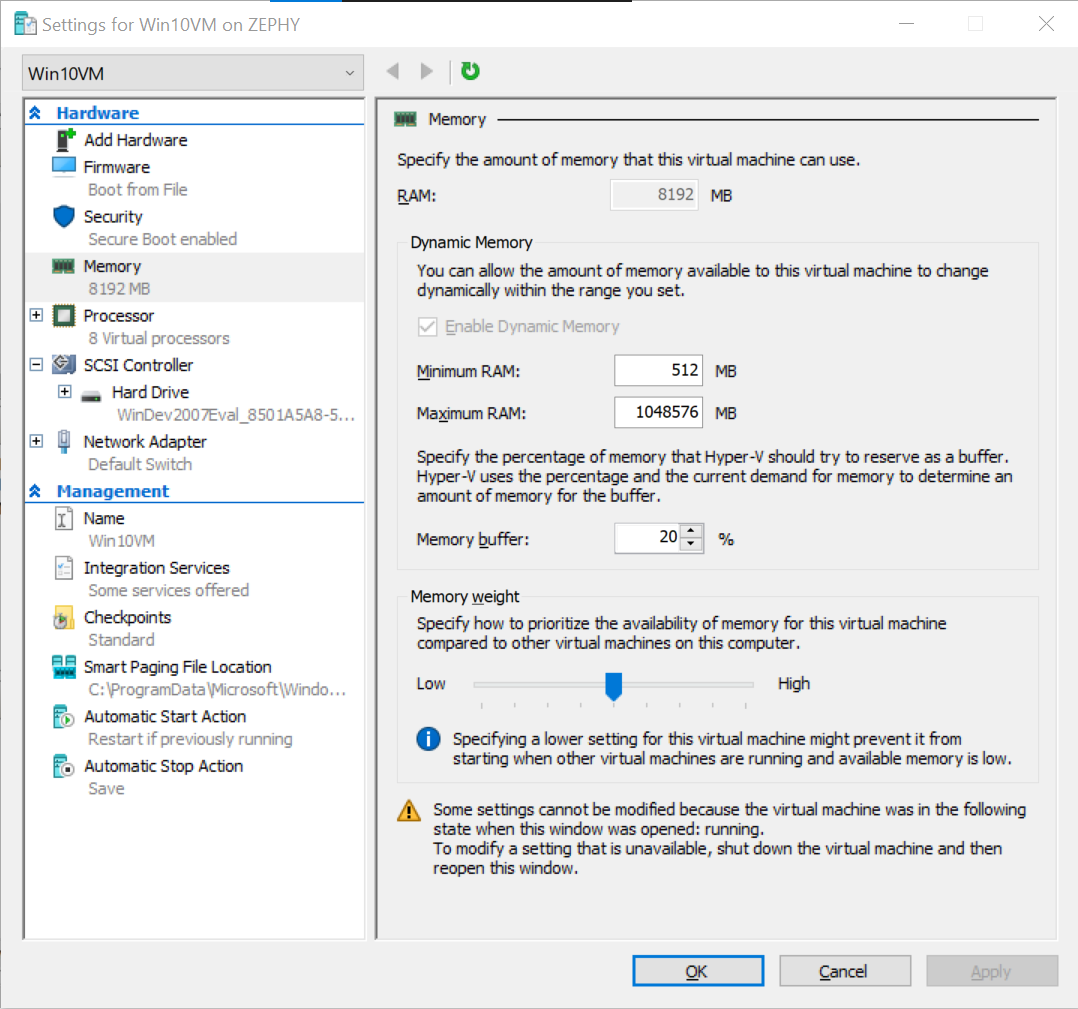
Hi,
Is your host physical or virtual? How do you set the memory of the VM?
Please also check Memory Demand and Memory Status for the selected VM in the info pane at the bottom of Hyper-V manager.

Please refer to this link for more details
https://learn.microsoft.com/zh-cn/archive/blogs/chrisavis/monitoring-dynamic-memory-in-windows-server-hyper-v-2012
Best Regards,
Ian





